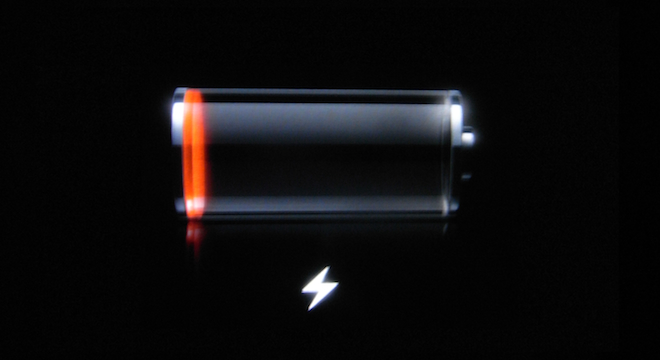Having trouble staying charged? The battery life of your smartphone could soon be extended by twice as long, ideally three times, using new lithium ion battery technology developed by researchers at Illinois institutes Northwestern University and Argonne National Laboratory.
“Doubling [battery life of smartphones] would be quite easy, three times would be a good number to shoot for,” said Harold Kung, a chemical and biological engineering professor at Northwestern and the lead author of a paper describing the breakthrough battery tech, published in the journal Advanced Energy Materials in October 2011. Northwestern is one of three major partners at Argonne National Laboratory’s Center for Electrical Energy Storage.
Now over a year since Kung and company’s method was first described in detail, the technology is making its way into commercial production: A Los Angeles-based startup company called California Lithium Battery in late October 2012 announced that it had achieved a record-setting lithium-ion battery performance in laboratory tests using technology developed in conjunction with Argonne, based on Kung’s work.
“We’re the first to bring [the technology] to the commercial market,” said California Lithium Battery CEO Phil Roberts in a phone interview with TPM.
Specifically, California Lithium Battery reported an increase of 3 times the battery energy capacity — how much charge a battery can store — over standard lithium ion batteries, which are the most common type of battery found in consumer electronics around the globe.
California Lithium’s Battery technology is called GEN3, and it involves extremely precise modifications to the anode portion of a standard lithium-ion battery.
The anode is the one of two electodes found in a battery. It is commonly represented as the negative terminal, but which actually corresponds to the space through which an electrical current flows into the battery cell from outside. The other, opposite electrode, the cathode, is typically where the charge flows out.
GEN3 uses silicon for the anode, where most lithium ion batteries today use graphite. Silicon has a much higher absorption rate of lithium ions, which flow from the cathode to the anode during charging, making silicon a better material to use when building high-capacity batteries. But there’s a problem: Silicon also rapidly deteriorates after just a few charge/discharge cycles, making it unsuitable for any longterm use. Argonne and Northwestern researchers proposed a way around this by inserting porous sheets of graphene — a relatively new, Nobel Prize-winning nano-material that is among the strongest, thinnest and most electrically conductive ever developed — in between silicon nanoparticles, creating a kind of sandwich. Hence the name: silicon graphene.
In a press release, California Lithium Battery stated that it was working to turn its GEN3 silicon graphene anode into a “drop-in” replacement for the current standard graphite anodes used in most lithium-ion batteries, meaning no expensive overhaul to replace a whole battery type, nor a whole new manufacturing form-factor when making new smartphones, tablets, and other consumer electronics. The company said at the time of its release in late October that it hoped to produce and sell the material as full batteries and as replacement anodes in the next two to three years, but Roberts told TPM that the timeline to commercial release could be even more aggressive than that.
“We’re anticipating to get it to a pilot scale in roughly six months,” Roberts said.
As for just what specific devices consumers can expect to see the new, ultra high-capacity batteries in, Roberts remained coy, saying that “non-disclosure agreements” prevented him from naming names at this time.
However, Roberts was able to tell TPM that “the first commercial application will be portable electronics, including cell phones and laptops,” and that his company California Lithium Battery was working with “the largest major corporations in the world selling these types of devices.”
The cost of the GEN3 drop-ins and batteries have yet to be determined, but California Lithium Battery is confident it can “directly compete with the cost of energy from fossil fueled power generation.”
Kung, too, told TPM that he was independently in talks with “cell phone companies,” to commercialize one variant of the technology for which he’d filed a patent.
But as Kung pointed out, higher capacity doesn’t always translate to longer mobile device battery lifetime if the batteries are being used in mobile devices with more energy-intensive features.
Device manufacturers “are not only looking at how long you can use the cell phones,
but how many things you can do,” Kung explained to TPM. “The more things you’re doing the more power you need.”
So even if the dream of a full 24-hour-long powered smartphone is technically feasible, as seems to be on the horizon, there’s no guarantee that it will ever make it into production, meaning that consumers may still resort to guerilla charging their mobile devices in the event of a power outage like the blackout that enveloped lower Manhattan in the wake of Hurricane/Superstorm Sandy.
Eventually, both Kung and Roberts and other advanced battery pioneers want to scale-up their technologies for use in electric and hybrid vehicles, which would result in longer driving distances per charge, helping to alleviate the “range anxiety” that currently surrounds electric vehicles.






